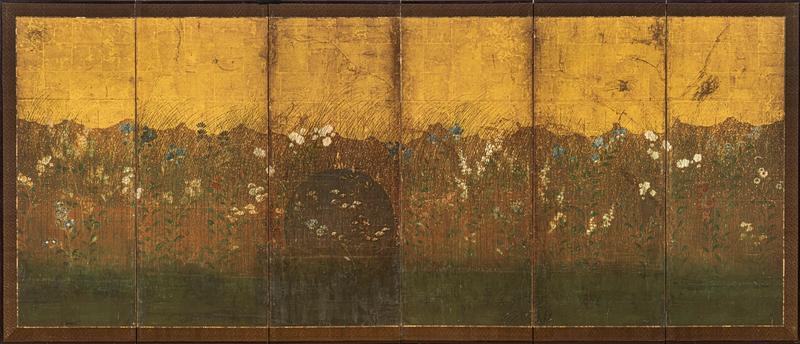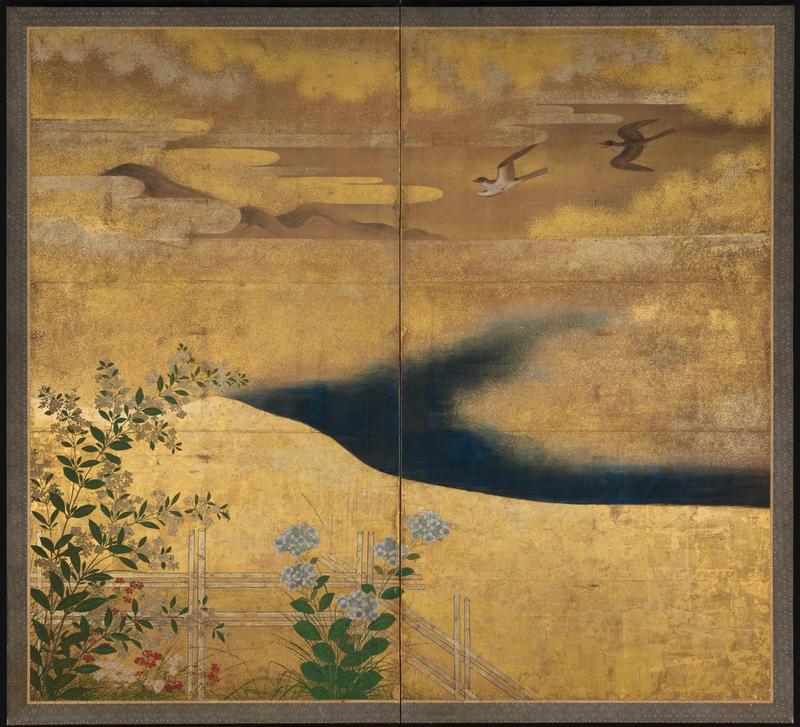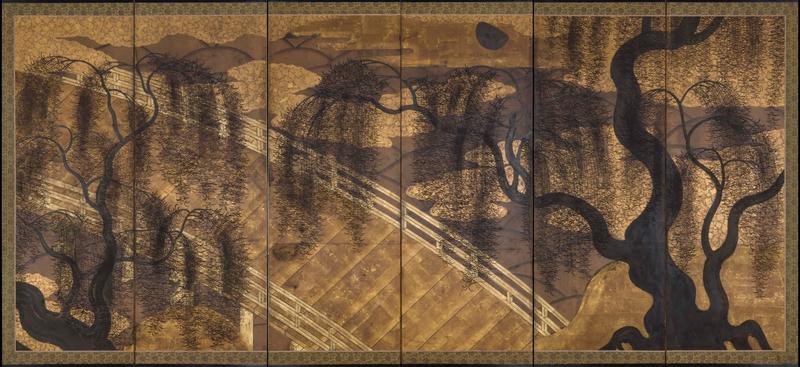A six-fold paper screen painted in ink and colour on a gold ground with autumn flowers and grasses.
Japan, 17th century, Edo period.
Not only the changing colours of autumn leaves but also flowers and grasses of the same season have been popular subjects in Japanese art, literature and poetry from an early period. In particular, the aki no nanakusa (seven grasses of autumn) theme dates to the eighth century poetry collection Manyōshū (Collection of Myriad Leaves) and has continued to be a favourite theme. As in the below two poems by an aristocrat and poet Yamanoue no Okura (660-733) included in the Manyōshū, the seven autumn grasses consist of hagi (bush clover), susuki (pampas grass), kuzu (arrowroot), nadeshiko (fringed pink), onimaeshi (golden lace), fujibakama (mistflower) and kikyō (bellflower).
Aki no no ni Flowers blossoming
sakitaru hana o in autumn fields -
yubi orite when I count them
kaki kazoureba on my fingers
nana kusa no hana. then there are seven.
Hagi no hana The flowers of bush clover,
obana kuzubana pampas grass, arrowroot,
nadeshiko no hana fringed pink,
ominaeshi golden lace,
mata fujibakama also, mistflower
asagao no hana and bellflower
Screens

A two-fold screen with the Uji River and its bridge

An eight-fold screen depicting flowers of the four seasons

A pair of six-fold screens depicting the maritime routes of the Seto Inland Sea and of the north of Kyushu Island

A six-fold paper screen with the Plains at Musashino

A pair of six-fold paper with sweetfish

A two-fold screen with a river landscape

A six-fold screen with a covey of uzura and chicks

A six-fold screen with grape vines

A two-fold screen with chrysanthemums

A pair of six-fold paper screens with the Plains at Musashino

A pair of four-fold screens with kuri flowers

A two-fold screen with court ladies

Four fusuma by Nagasawa Rosetsu

A six-fold screen with autumn flowers and grasses

A pair of six-fold screens with scattered fans

A paper screen with the Uji river and its bridge

A pair of six-fold screens with poem slips from the 17th century

A pair of six-fold screens depicting ‘One Hundred Boys'

A pair of six-fold screens with clematis









